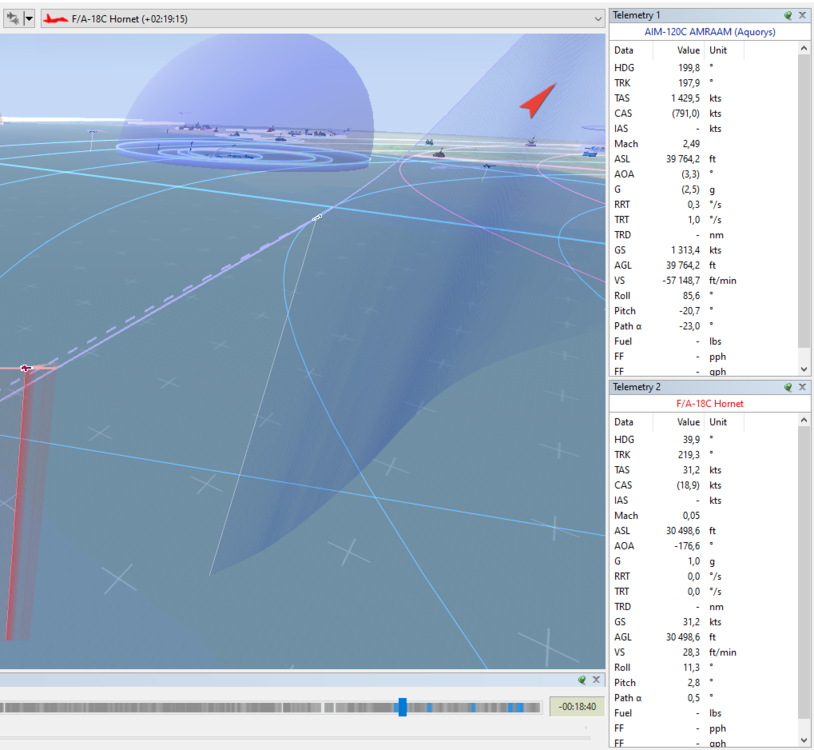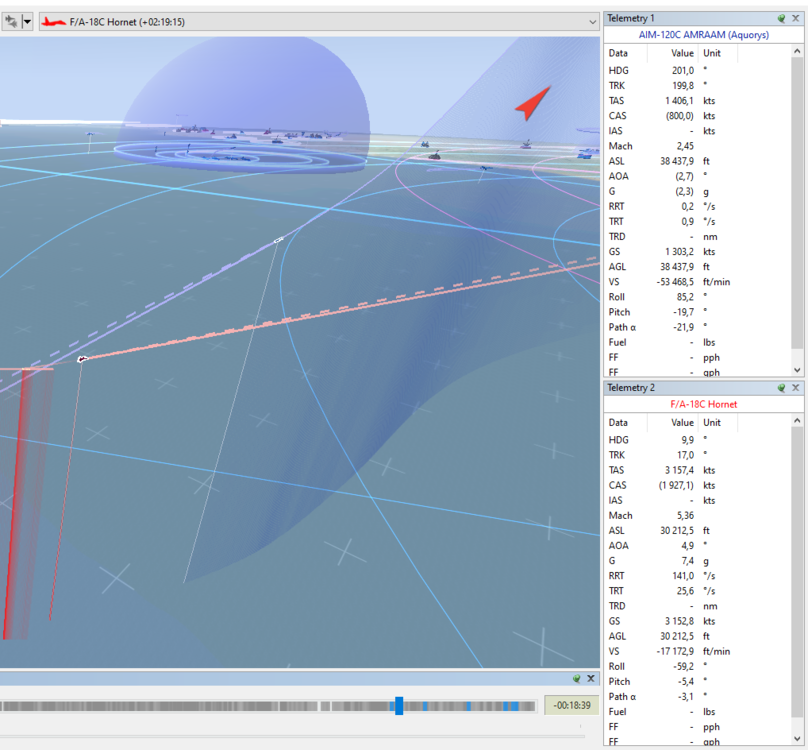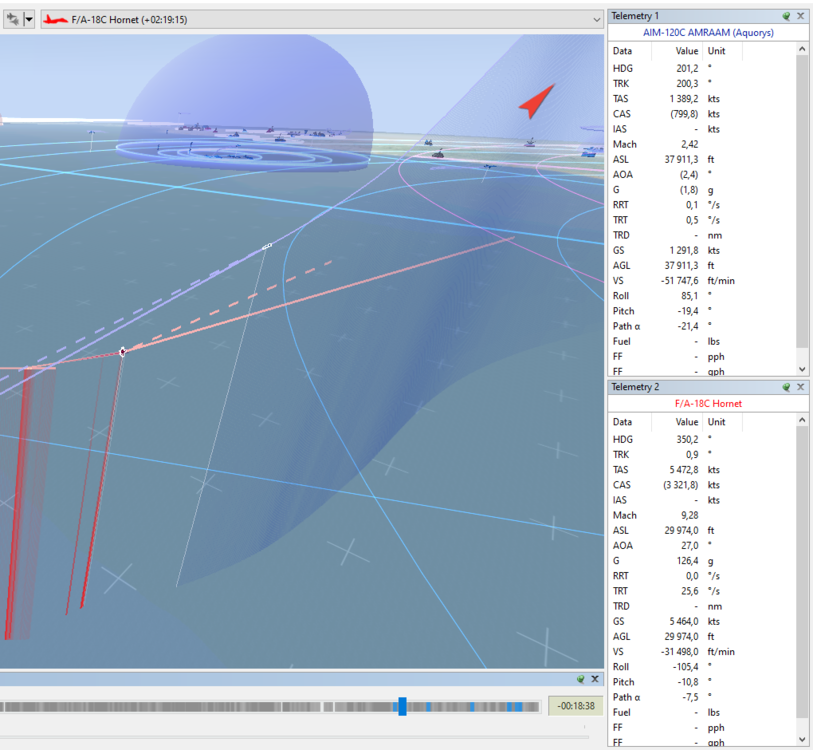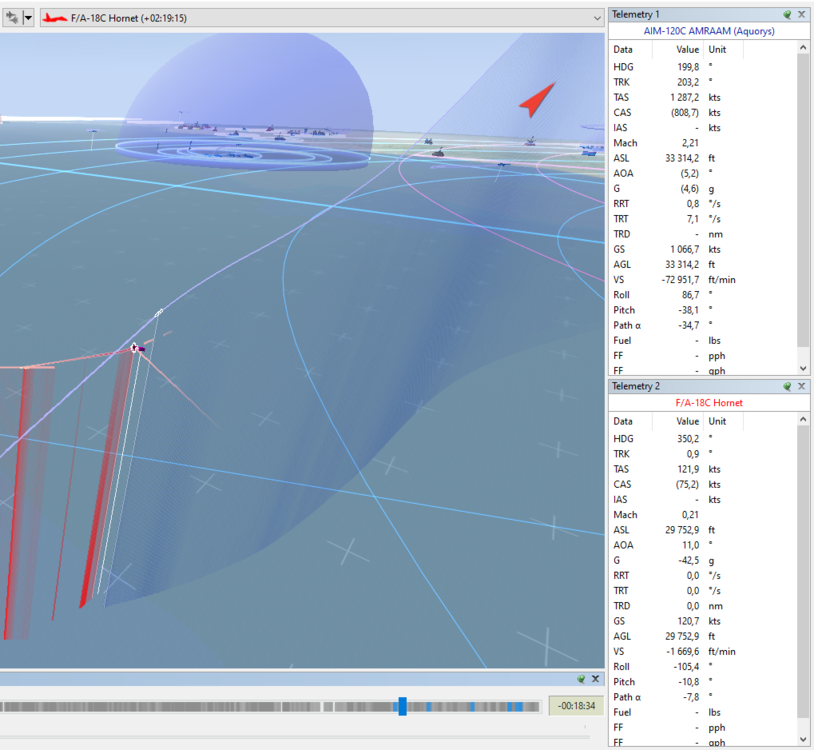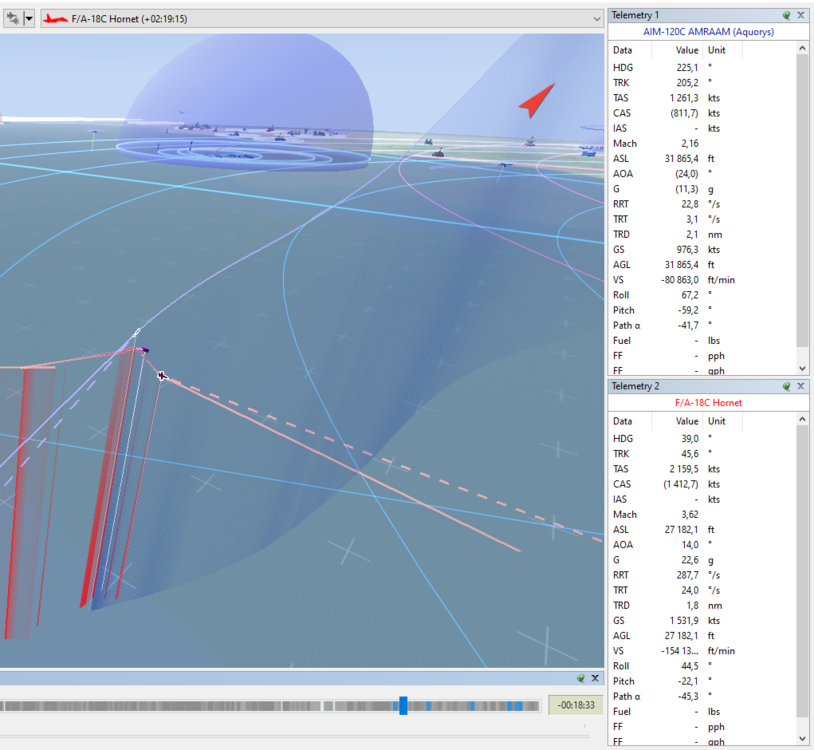-
Posts
327 -
Joined
-
Last visited
Content Type
Profiles
Forums
Events
Everything posted by Aquorys
-

F-16C and GBU-10 Laser Guided Bomb release methods
Aquorys replied to Top Jockey's topic in DCS: F-16C Viper
CCRP with the targeting pod should work for bombing ships. The TGP should have point track that's following the ship, and you should ideally attack from the bow or stern side of the ship. Depending on how fast the ship is moving one might be better than the other. You should be reasonably fast, around 400 knots or so, and some 6k to 20k ft above. Follow the cue line and hold WPN REL until the bomb is released, wait 3 seconds, then hold the trigger to lase the target. Also, make sure the laser is armed and the laser codes are set correctly, or the bomb would obviously not track. While lasing, steer the aircraft so that you keep the ship on the right side of your aircraft. Depending on your flight profile, you might want to continue left or circle right until the bomb impacts. That's the procedure I have used very often, normally with GBU-10s, and it has worked very reliably for me so far. -
If you accidentally started in BATT instead of MAIN PWR, go to MAIN PWR. The MAIN GEN light should go out after a few seconds and you'll still see FLCS RLY illuminated. Go to the TEST panel and select FLCS PWR - TEST, the FLCS RLY light should go out. Let go of the FLCS PWR - TEST switch so that it resets to NORM, and the ELEC SYS light should go out. What you should do during startup is: MAIN PWR switch - Select BATT FLCS PWR - TEST switch - Select and hold TEST Check the FLCS PWR A/B/C/D light (should illuminate A/B/C/D) Check the ELEC - ACFT BATT - CHECK light (should illuminate TO FLCS) Check the ELEC - CHECK light (should illuminate FLCS PMG) FLCS PWR - TEST switch - Release (return to NORM) MAIN PWR switch - Select MAIN PWR This is all done with the engines still off. The engines are started with the MAIN PWR setting.
-
Not sure what you mean by "lock on". There are two things that you can lock the target with in DGFT mode, the radar or the missile's (9X) IIR seeker. For the missile's seeker to follow the HMCS, it has to be in the BORE mode, and this doesn't need the radar at all. For the radar to lock on, you will have to select one of the ACM radar modes, and it would seem that you have put it on standby by selecting TMS aft. Go TMS forward for boresight (which will follow the HMCS if it's enabled), TMS right for 30/20 or TMS aft for 10/60. Moving the radar cursor in any mode would switch to SLEW, but I'm not sure whether that's implemented in DCS. To fire AMRAAMs, you'd ideally want a radar lock, but you can fire one without a radar lock if the target will be in the AMRAAM radar's cone shortly after you launched it.
-
Just played for only ~40 minutes, all singleplayer, I don't even know where to start... I tried to join 2 different multi-player servers 3 times, DCS became unresponsive in the "Mission Load Done" phase every time. In single player, started from the missions menu, selecting "Fly again" after the mission put me in an aircraft apparently controlled by AI, or possibly in track replay mode, and would also enable and disable time compression autonomously without me touching anything. With single player started from the editor however, "Fly again" worked as expected. In the F-16, TMS forward and TMS right are malfunctioning in various ways, e.g. selecting a target on the FCR will often make it disappear instead of selecting it, and selecting the next on will make the newly selected one disappear and the previously selected one reappear. The FCR sometimes shows an altitude label for a target that is no longer there. The FCR loses system files without having lost the track file, which makes no sense. The buttons for an ECM module show "active" (A) without an ECM pod being installed. TWS is essentially unusable, of the ~15 AMRAAMs I fired while I was reproducing the bugs I just listed, only one or two were able to be guided until they went active (and only because of very close range). What happened in the last update? Nothing works. Since the last update, it's barely usable for anything else than just flying around. Not cool, folks.
-

correct as is F16 Blk50 Radar needs upgrade to reality level.
Aquorys replied to zanebanks's topic in Bugs and Problems
The real problem with the F-16's radar in DCS is probably not the antenna's performance, but the fire control system around it. A lot seems to be broken since the last update, I just jumped into a few single-player scenarios in DCS. First, I used TMS right to bug a target, and instead of it being bugged, it disappeared from the display. Doing it again would make the other target disappear and the one that should previously have been bugged reappear. Only after several seconds of messing around, dropping system files and even track files and then selecting them again manually, could I finally get a target bugged. This was reproducible. I was also unable to select targets with TMS forward. I was also unable to guide two AMRAAMs for more than a couple seconds, because the computer dropped the system track on both targets, although it had no problem keeping the track file, which makes absolutely no sense at all. Sometimes, the track files were dropped too, in those cases the targets disappeared only for about a quarter second (which doesn't even make sense with the update frequency of the F-16's radar). These problems persisted within 20 nm. This is all made worse by the fact that the simulation in DCS does not have any memory that would help it overcome a briefly lost radar track that reappears on one of the subsequent scans within a certain time period, and correlate the not-so-new track with a track file that's still in memory (which is a capability that the real world radar has to some extent). The result is that the DCS F-16 frequently loses a lot more information than a real world one, and the workload to reacquire it is on the pilot instead of automation. Together with the other problems that I just listed, the F-16 is currently barely usable for anything other than engaging a single target, because TWS essentially doesn't work at all. And those are just the F-16-related bugs since the last update, I found a couple more that have nothing to do with the F-16 too, and I only played for ~40 minutes today. It seems that the quality of DCS has gone downhill vertically for some reason. -
Depending on what exact Fox 3 you're talking about, jamming may not be too effective against those anyway, because at least some of them also have home-on-jam capabilities (e.g. the AMRAAM), which is supposed to be good enough to get the missile close enough to the target to allow its onboard radar to "burn through" the jamming signal. I have no idea whether or not this is modeled in DCS though.
-

reported MICA missiles are only a shadow of what they should be
Aquorys replied to Mad_Shell's topic in Weapon Bugs
The whole category of guided missiles is way less authentic compared to real life than most other things in DCS because the details regarding their design and capabilities are classified. If the launch platform has it, which the Mirage 2000-5 probably doesn't. It would need to have sensors or a radar in the rear sector to be able to designate a target that's behind it, or alternatively, have another aircraft provide targeting data via the datalink, if it even has buddy-launch capability (I don't know if it does, there are some aircraft that do, e.g. the Eurofighter). The missile needs some inital information to guide it to a position from where it would be able to find the target, because the on-board sensors of the missile don't have 360 degree coverage. -
It's a 70s aircraft though, not an Airbus 350. The FLCS does some things, like keep pitch roughly at 1G, but it doesn't compensate for sudden weight imbalances in roll or for wind that's pushing you somewhere. If you want to take the hands off the controls a bit more, e.g. because you're busy planning, configuring, etc., my suggestion would be, you do a coarse manual trim, adjust thrust and then put the autopilot on attitude hold.
-
I'd also recommend to rather look at TacView. I have rarely seen missiles do any really hard maneuvering without failing, so I've always had the impression that the opposite is true: they can't maneuver well enough in DCS, and they're too slow as well.
-

Smarter ATC and more authentic/standard phraseology
Aquorys replied to Aquorys's topic in DCS Core Wish List
Didn't find anything specific in the roadmap, just generic "Improved ATC", "NATO ATC", "Russian ATC", etc. items, so I think some more specific input still makes sense. -
One thing that I think still needs a lot of improvements to be useful is ATC. Currently, it frequently does irrational things, like expecting me to request a startup while I'm cruising at 30k ft and would actually like to request an approach, or it keeps repeating a "hold short" instruction for someone who's parked or even flying every 2 seconds. The most important improvement in my opinion would be deconfliction on the runway, making sure that either one aircraft is landing or another one is taking off, but not both at the same time, as that would help a lot in multiplayer games. Another thing that I think should be changed is virtually all of the ATC phraseology. I guess it would be a bit too complicated to make it really authentic in the game, but it should at least be somewhat close to standard phraseology and not completely off as it is now. Here are some of the more significant ones that come to my mind: Cleared for startup Startup approved Request takeoff Springfield 1-1, ready at runway 21 left ...answered by something like... Springfield 1-1, runway 21 left, cleared for takeoff ...and similarly for landings... Springfield 1-1, runway 08 right, cleared to land Also, an option to announce a go-around would be helpful, as it happens quite frequently in multiplayer, something like: Springfield 1-1, going around It would probably best to consult a couple ATC folks what they think the best compromise between realism/authenticity and feasibility within the limitations of the game would be.
-
FWIW, there is a pitch override switch in the Viper that would possibly give you more AoA when you're slow, but I don't think people use that a lot. It's meant for recovering from deep stalls. If you used it for dogfighting, I guess it would be more likely to make you depart than help you win the fight.
-
Maybe it doesn't in real life if you pull that paddle switch on the Hornet. In that case, that would be realistic, and what's actually missing for the whole situation to be more realistic is the simulation of airframe damage on the Hornet if you overstress the airframe.
-
Where do you get much more than 9G? Mine doesn't, most of the time it'll rather do some 8.5 to 8.9. Maybe you'll get 9.2 for a second at 650 knots before it drops to 9 or below, just like you'll probably get 7.7 briefly on the Hornet every now and then. 9.2 instead of 9 for one second isn't the same as 9 instead of 7.5 all day though.
-
I guess it kind of does, because the Hornet is a 7.5G aircraft, and that's what the real-world assessment of the Viper outperforming the Hornet in real life is generally based on. Yeah, if you decide to destroy your aircraft by overstressing the airframe, then a Hornet will do pretty much the same 9G turns as the Viper (same speed, same Gs means pretty much the same turn rate and the same turn radius). And it can possibly outperform the Viper if you do that, in real life. But if you do, you're just gonna lose two aircraft instead of one.
-
The flight characteristics are most probably not that much affected by that. What's really massively affected by secrecy is anything concerning radar and other sensors, countermeasures (especially ECM) and the capabilities of air-to-air missiles and some air-to-ground missiles like the HARM and Harpoon/Kormoran/Exocet etc.
-
The 2000 lb version of those bombs frequently leaves about 15 m / 50 ft diameter and about 10 m / 33 ft deep craters where they hit. So it does indeed seem they are quite underpowered in the game.
-
Just tried a couple things in singleplayer, clean jet (pylons removed), fuel around 6000 - 2000, I didn't get more than 26 degrees AoA. I hit a turn rate of 19 1/2 around 395 knots, but could not sustain the turn at that speed. I could sustain 7.5 G at about 550 knots doing 16 1/2 degrees. I briefly got 21 degrees turn rate going vertically over the top at about 360 knots and somewhat over 7 G. This was all done at ~11k ft ASL (except for the vertical turns of course). Singleplayer vs. a Veteran AI F/A-18C Lot 20 I could consistently outmaneuver a clean Hornet with 80% Fuel with a full A/A loadout (four AMRAAMs, 2 Sidewinders) on the F-16 and also 80% fuel. However, the AI's flying, especially energy management, probably isn't the best (people stated in this forum that it's worse in the Ace level, which is why I used the Veteran level on the AI Hornet). I did get the first shot vs. a Hornet armed with 9X on the wingtips, but it's very close (again, full A/A loadout on the F-16). What I've noticed is that if you're already slow (~ 250 knots) you need to unload a lot to regain speed, even if you're pointed toward the ground and in full afterburner.
-

reported AIM-120s + All AIM-120 API Missiles in 2.7.7
Aquorys replied to DSplayer's topic in Weapon Bugs
I can certainly tell you why AMRAAMs often don't hit in multiplayer games: Sync issues. For example, I recently engaged this AI Hornet on a PvE server and was wondering why none of my four attempts to intercept it with AMRAAMs was successful. It became quite clear when I reviewed the telemetry: This Hornet froze and then jumped every couple seconds, as you can see in the track display. Its speed first drops to less than 100 kcas (it's might actually be 0 kcas and some smoothing of the speed calculations is going on), then suddenly jumps to Mach 9.2. Right before the missile would probably have hit, that Hornet just magically jumped away a couple hundred feet. -
I have seen Mover's videos with the TacView debrief, and one thing that I remember him comment on is that the Viper seemed to go beyond the AoA limiter quite regularly. Even if the drag modeling were correct (which I'm inclined to think, it's probably not, because turbulent airflow is complicated), you'd be bleeding speed faster at 30 AoA than at the 26 AoA that it's supposed to be limited to, so maybe what's actually causing this problem is the simulation of the flight control system. Anyhow, as I already said in another thread, I think all of this turn-performance, dogfight, acceleration, etc. stuff is way overrated with regards to gameplay and/or realism. I mean, it's kinda close enough to make it fun to play, and even if you're really that much interested in realism, there are other problems - both, in the sim and in people's tactics or even basic airmanship - that are way bigger problems for in-game realism than how fast your jet is going around the corner.
-
Selective jettison requires master arm on in the real-world aircraft (this is currently modeled inaccurately in DCS). It is true however that an S-J of an AGM-88 will result in an unguided launch.
-
For 1), EOM allows you to fire while not pointed at the target, while PB would inhibit firing from more than 5 degrees off-target laterally (not sure if it actually does in DCS). Same for RUK, but with even less range, due to allowing for a greater search area of the missile. RUK is a degraded EOM mode. For 2), The advantage of lofting in PB mode is that when the missile is fired at the indicated ideal loft angle, you will be able to engage the target from further away, meaning, it optimizes the missile's range.
-

can not reproduce DATALINK intermittent bandits disappearing
Aquorys replied to Riverseeker's topic in Bugs and Problems
Not my mission file unfortunately. I'll try and let the admins of that server know, maybe they can fix the issue by changing the AWACS to use either a racetrack orbit or to use waypoint switching. -

can not reproduce DATALINK intermittent bandits disappearing
Aquorys replied to Riverseeker's topic in Bugs and Problems
I have seen this happen on multiplayer missions. There is an AWACS orbiting in quite a tight circle at 39k feet. It seems that the datalink would only provide information from the AWACS whenever I was to the rear of the AWACS (an E-3). Whenever its nose was pointed at me, I'd lose the picture. As soon as I got behind it, the picture reappeared. It seems to vary depending on the distance between the AWACS and myself. Haven't done any more testing as of now. -
As far as I've tried it, it already does. Your pilot doesn't for very long, so if you want to test it, you could create a test mission and turn off G effects. The F-16 can only sustain 9Gs at high speeds. The heavier the aircraft (fuel, weapons, etc.), the higher the speed you need to get sustained 9G turns. You can quite easily reach a weight where the aircraft cannot sustain 9G turns (or at least not at speeds where it would still be useful), and there are also a lot of configurations (specifically A-G) where you can't do 9G turns at all (or at least not without over-Ging the aircraft, which would potentially cause damage to the airframe and/or any G-limited equipment or ordnance mounted on it).




